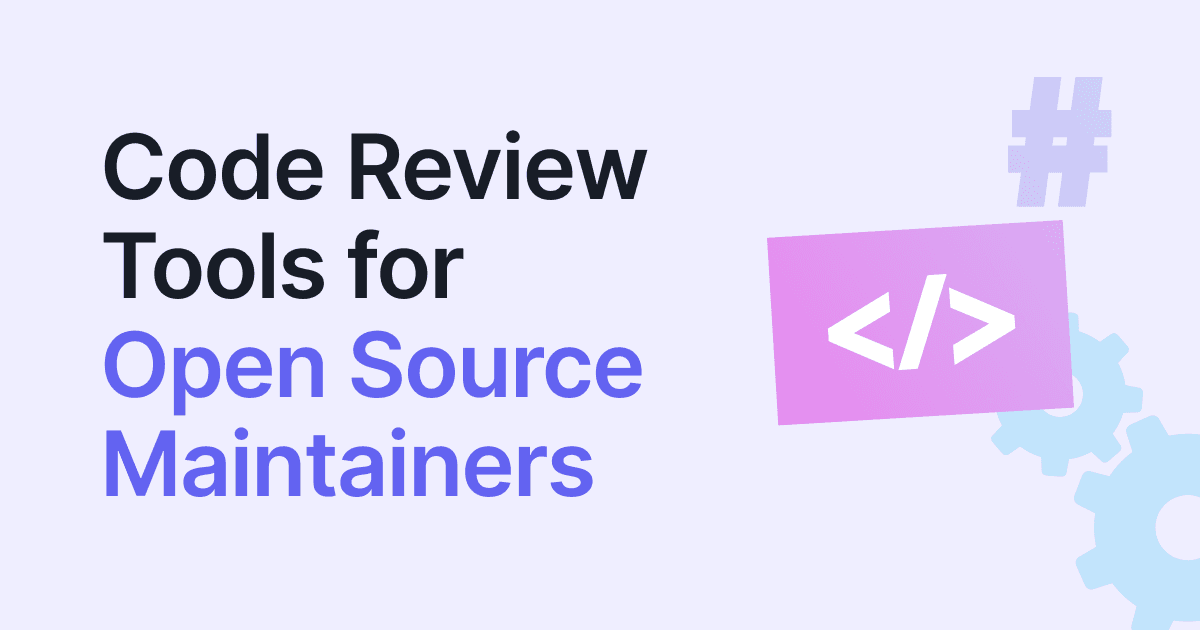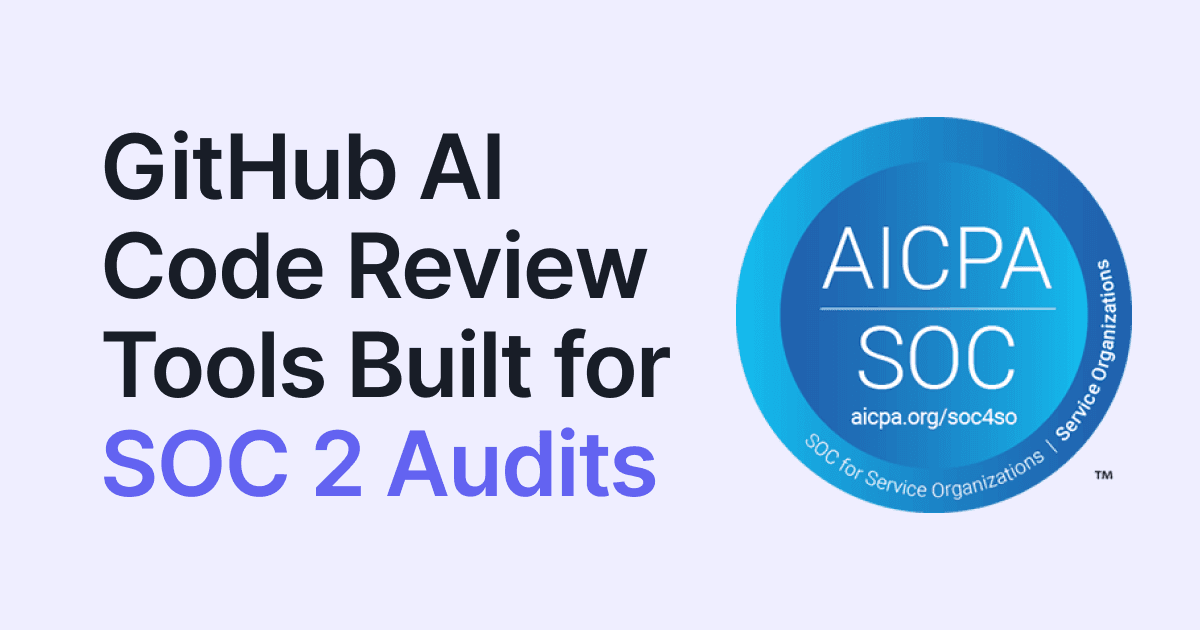AI Code Review
Sep 23, 2025
Code Review Tips for AI-Assisted Coding: 10 Ways to Ship Clean, Secure Code

Amartya Jha
Founder & CEO, CodeAnt AI
Code review was supposed to be the safety net that kept bad code out of production. But AI coding tools are rewriting the rules. Teams are shipping more code, faster, and without clear guardrails, that speed can turn into technical debt. Instead of catching mistakes, your reviewers may be overwhelmed by AI-generated changes they don’t fully understand.
More churn: AI-assisted commits often show higher code churn and duplicated logic.
Lower clarity: Generated code can be confusing, insecure or inconsistent with team standards.
Review overload: Traditional code review practices struggle under the volume and velocity of AI-generated pull requests.
The question isn’t whether you should review AI-generated code, it’s how. In this guide, you’ll see:
Why old habits break down
When it still makes sense to review your own AI-assisted code
How to build a code review process that keeps quality high
Whether you’re using AI coding assistants, handling AI-generated pull requests, or setting review standards for your team, the following sections show what works in the real world.
But before we dive into practical tips, it’s worth looking at the most popular AI coding assistant “Copilot” on the planet and why it illustrates both the promise and the pitfalls of AI-generated code.
Why Copilot Isn’t a Magic Wand
AI coding tools can feel like magic, but they’re more like an eager junior developer than a seasoned engineer. They can instantly generate boilerplate, unit tests, config files and even complex regex patterns, freeing you from repetitive tasks. Yet, just like a junior dev, they don’t fully grasp your architecture, intent or edge cases unless you explicitly teach them.
They mirror your patterns: If your codebase contains sloppy or insecure examples, the AI may regurgitate and even amplify those mistakes. In one analysis, nearly one-third of AI-suggested Python code contained security issues, not because the model was malicious, but because it learned from public code, good and bad alike.
They don’t understand your standards: AI assistants don’t know your team’s coding standards, security policies or review process unless you build those guardrails yourself.
They accelerate both good and bad outcomes: Generative AI happily speeds up your work, and your mistakes, if you let it.
That’s why experienced teams treat AI assistants as junior partners who draft code, while senior engineers and AI code review tools provide the oversight. Human expertise still matters: someone has to prompt well, review outputs, and test them. Without oversight, you risk subtle bugs or vulnerabilities slipping in under the guise of “productivity.”
10 Tips for Clean Code Review
AI coding tools can write code fast, but clean, production-ready software still depends on disciplined code review. These ten tips show how to combine the speed of AI-generated code with the guardrails of CodeAnt.ai’s review so every change stays secure, maintainable, and on-standard.
1. Play to the AI’s strengths
Let the AI code assistant like Copilot handle the tedious bits. It excels at boilerplate, scaffolding repetitive classes or API clients, and drafting unit tests once logic exists (describe the test cases and it can often generate an entire test file or config). It’s also strong at regex or complex string manipulation, comment the pattern you need and it will propose options, saving trial-and-error.
Use it for loops, simple data classes, repetitive patterns, docstrings, and setup code so you can focus on design decisions. As many DevOps leaders note, early-stage work, debugging, boilerplate, test stubs, is within the AI’s grasp.
Guardrail: avoid offloading business-critical or highly creative logic. Use AI to accelerate known patterns, not invent novel algorithms. Play to its strengths; backstop with your own reviews.
2. Provide Ample Context
AI coding assistants are context-hungry: the more relevant information you show them, the better the output. To improve suggestion quality, surround the assistant with clues about your intent and codebase. In practice, this means:
Keep relevant files, functions and references open in your editor so the AI “sees” them. It only works with what’s visible in its current context window.
Include imports, class definitions and helper functions upfront so generated code matches your project’s style and uses available symbols correctly.
Use descriptive file and function names, they act as cues for the AI just like they do for a junior developer.
Open neighboring modules when writing tests or components (for example, keep the implementation file beside the test file, or open CSS/state management files for a front-end component) so the model understands the full picture.
Context also extends to configuration. Make sure your project’s libraries, standards and conventions are obvious in imports and config files. A quick stub of a function signature or a comment describing the goal can prompt the AI to fill in a fitting implementation, but only if it can “see” enough to work from.
Think of it as setting up a new teammate: “Here are the relevant files and an outline of the problem.” Without that prep they’ll code in a vacuum. With it, they’ll produce work that fits your architecture and style, and then scan the output in seconds to catch anything you missed.
3. Prompt with Descriptive Comments and Docstrings
No AI coding tool can read your mind, but they do read your comments and docstrings. The clearest way to steer them is to treat those as mini-specifications for what you want. Write a clear, descriptive comment before a block of code and you’ll often get an implementation that matches your intent.
For example, instead of a vague comment like // calculate before a function, write // Calculate total price including tax for each item in the cart.
With that, AI coding assistants will understand the goal and are far more likely to produce the correct loop or formula. In one case, simply adding a clarifying comment yielded a much cleaner suggestion, the difference between a cryptic one-liner and a clear block of code with proper variable names. Descriptive docstrings for functions work similarly: if you write a docstring explaining the function’s purpose, parameters, and expected return, an AI coding assistant like Copilot, can fill in the function body aligned with that spec.
Consider this before/after prompt example:
Before:
AI code tools might not know what “process” means here and could output a generic or incorrect implementation.
After:
Now your AI code tool has rich clues. It can deduce that it should validate certain fields (perhaps checking types or required keys) and then compute some averages and totals, returning a dictionary of stats. The suggestions will be far closer to what you intend, because your comment/docstring spelled it out.
Think of writing comments as briefing a very literal junior developer. “Do the thing” will produce a guess; “Do X by doing Y and Z” will produce a plan. Comments and docstrings work best when they:
State purpose clearly (what the code should do, not just a vague verb).
List parameters and return types.
Include examples or edge cases (“returns ‘FizzBuzz’ for 15, ‘Fizz’ for 3…”).
This combination acts like prompt engineering for code: you’re writing the spec and letting the AI fill in the implementation. It also doubles as documentation for human reviewers.
Finally, even with clear prompts, run an AI code review with CodeAnt.ai on the generated snippet. It will flag security issues, style violations, and duplicated logic that might slip through, so your descriptive prompting plus automated review becomes a two-layer quality check.
4. Use Meaningful Names
Naming things is one of the hardest problems in software, but it’s also one of the most powerful ways to guide both human reviewers and automated tools like CodeAnt. Clear, descriptive variable and function names act like mini-specifications: they make code easier to read and give CodeAnt.ai richer context to analyse logic, spot duplication and check security.
A vague name is like giving no requirements to a junior developer, they’ll either do something arbitrary or nothing useful. A specific name is a built-in hint about purpose and data type. For example:
Function name: handle() vs. handle_http_request(), the latter signals parsing, routing and header checks, so reviewers immediately know what to expect.
Variable name: temp vs. user_age_years, the latter tells you it’s an integer representing age, not a throw-away placeholder.
Good naming also improves automated code review. CodeAnt.ai uses identifiers as part of its context when checking logic, duplication and policy compliance; clear names let it detect subtle mistakes (like mis-typed fields or unsafe usage) more accurately.
A practical tip: include specific nouns that indicate type or domain concept (orders_list, user_dict). This helps both team members and AI coding tools understand loops, properties and access patterns at a glance.
Finally, don’t accept AI-suggested names blindly. Refactor unclear identifiers to something meaningful; consistent, descriptive naming across your codebase will improve future AI suggestions and make CodeAnt.ai’s reviews even more precise.
Bottom line: meaningful names aren’t just nice for humans, they’re a force multiplier for clean, reviewable code and for CodeAnt’s ability to keep your standards high.
5. Pair AI code assistants with an AI Code Reviewer
Even the best author needs an editor. In coding, that editor can now be an AI code review tool. AI assistants can crank out code quickly, but you shouldn’t be the sole reviewer of what you (or an AI) just wrote. Fresh eyes catch bugs and design flaws the author misses, an AI reviewer gives you those eyes instantly.
Why it matters:
Immediate oversight: CodeAnt.ai reviews every pull request in real time, summarising changes, detecting bugs, and flagging security flaws.

Automatic quality gates: It enforces your coding standards, security checks, and style rules on every commit without relying on human stamina.
Actionable fixes: It not only highlights issues but often provides one-click fixes or clear suggestions, cutting review effort dramatically (teams report up to an 80 % reduction in manual review work).

Unified platform: CodeAnt.ai covers quality and security together, no juggling linters, SAST scanners and policy scripts.
Unlike basic pattern matching, CodeAnt’s AI understands code intent. It can flag null-pointer risks, unhandled edge cases, duplicated code (a common AI by-product), or a Copilot-generated function that violates your security guidelines.

Used together, the workflow looks like this: AI assistant writes → CodeAnt reviews → you refine → human approval. This “author–editor” loop preserves velocity while keeping quality, security and compliance intact.

Bottom line: don’t be both author and sole reviewer. Pair your AI code assistant’s speed with CodeAnt.ai’s vigilance and you’ll ship clean, robust code, reviewed in a fraction of the time it used to take manually.
6. Be Specific and Give Examples in Prompts
Specificity is everything. AI coding assistants work by pattern matching: if your prompt is vague, the result will be too. Clear, detailed prompts produce code that’s closer to what you want and easier for CodeAnt.ai (or any reviewer) to evaluate.
Spell out details and constraints. Instead of # parse the input, write # parse JSON string into a User object with fields name (str) and age (int). The AI is far more likely to import json, create a User, and type-convert correctly.
Provide input/output examples. A comment like # e.g. input "3,5,7" -> output [3,5,7] anchors behavior, so the AI generates the right parsing logic and edge-case handling.
Outline steps when needed. Comments such as # Sort (name, score) tuples by score desc, then name asc give it a plan to follow; “sort intelligently” leaves it guessing.
Plan first, then implement. Birgitta Böckeler calls this “ask for a plan before code.” You can simulate this inline: write # Plan: 1) do X, 2) do Y, 3) handle Z and then let the assistant generate code under that plan.
Bad prompt: “Optimize this data processing.”
Better: “Optimize: use list comprehension instead of for-loop, and use sum() built-in.”
Concrete instructions beat abstract ones. Instead of “toggle the UI,” specify “Add a boolean flag showButton; include it in the API response; toggle visibility based on that flag.”
Finally, if the first suggestion isn’t right, refine and try again. The AI doesn’t mind; each added constraint or example boosts the odds of a perfect next suggestion. Being explicit up front saves you rewrites later, and gives CodeAnt’s AI code review clearer intent to check against, catching mistakes before they ship.
7. Break Complex Tasks into Smaller Steps
AI assistants do their best work on bite-size problems. One giant prompt for a full feature often produces brittle, tangled code and exceeds context. Decompose the work (e.g., validate → persist → notify) and tackle each piece in sequence.
For every step, add a one-line spec, generate, run/tests, and adjust before moving on. Smaller prompts yield smaller diffs that you (and CodeAnt’s AI code review) can verify quickly; if a suggestion misses, refine the comment and regenerate. It may feel slower, but it cuts rework and surfaces bugs earlier, ending with code that’s easier to understand, test, and review.
# Step 1: Parse CSV -> list[dict] # Step 2: Filter invalid rows (missing email, age < 0) # Step 3: Save valid entries to DB |
8. Use Copilot Chat vs. Inline Completions Wisely
Copilot comes in two modes: inline completions (ghost text in your editor) and Copilot Chat (a side panel where you talk to the AI). Knowing when to use each makes a big difference to workflow.
Inline completions are perfect for quick, localised code generation when you already know roughly what you want. As you type, Copilot finishes loops, if-statements, or small blocks directly in context. It’s low-friction, like a supercharged autocomplete: minimal interruption, just hit Tab and keep coding. You can even cycle through alternative suggestions to pick the cleanest one.
Copilot Chat shines for higher-level help. It’s conversational, so you can ask open-ended questions, request refactors, generate unit tests, or have code explained. Select a snippet and ask “Explain this code” or “Refactor this function to use fewer nested loops.” Chat remembers the recent conversation, so you can iterate (“that didn’t work, try Y”) in a way inline mode can’t. It’s also useful for debugging: paste an error message or snippet and ask for possible causes or fixes.
A few practical tips:
Feed it the code you’re asking about. Chat isn’t omniscient, it only knows what’s in open files or what you paste in. Saying “see code above” or pasting a snippet ensures context.
Match the tool to the job. Inline for rapid in-flow completions; Chat for multi-step tasks, refactors, explanations and documentation.
Validate everything. Whether the code came from inline or Chat, treat it like a junior dev’s draft. Run tests and, ideally, pass it through an AI code reviewer like CodeAnt.ai to catch security issues, style violations and duplicated logic before merging.

Most developers blend the two: write code with inline suggestions, then pop open Chat when they hit a snag or need a bigger change.

Used together, and reviewed with CodeAnt.ai you get speed, clarity and safety instead of AI-generated chaos.
9. Cycle Through Suggestions and Refine Your Prompts
Don’t accept the first suggestion blindly. One of the biggest advantages of an AI coding assistant is that it can generate multiple possible solutions to the same prompt. Cycle through those options, most editors let you press a shortcut or click an icon to view alternatives, and you’ll often find a cleaner or more efficient version (for example, a list comprehension instead of a loop, or an O(n) approach instead of O(n²)).
If none of the suggestions fit, that’s a signal your prompt or context needs more detail. Add constraints or edge cases (“if input is empty, return 0”) and try again. Treat this like refining a search query: small tweaks can drastically improve results.
You can also steer the AI mid-stream. Edit the generated code or tell the chat version “That’s not what I intended, please do X,” the next completion will adapt. Over time, you’ll discover prompt styles that consistently yield good results for your project; share those with your team.

Bottom line: be interactive and picky. Check a few alternatives, guide the AI with refined prompts, and choose the best output. That’s how you turn the assistant into a directed collaborator instead of a one-shot code generator.
10. Review, Test, and Verify Copilot’s Output
At the end of the day you are responsible for the code that gets merged. No matter how good an AI suggestion looks, code review and test it as if a junior developer wrote it, because effectively, it did.
Review for readability and style
Ask yourself: does this follow our standards? Are variable names clear (refactor if not)? Is the code overly clever in a way that sacrifices clarity? AI can produce idiosyncratic code that passes tests but is hard to maintain. Treat it like a real code review: if a teammate submitted this, would you approve?
Test thoroughly and hit edge cases
If the AI wrote a function, create unit tests for it (the AI can even draft them). Run your test suite and try to break the code: null inputs, extreme sizes, unexpected formats. Don’t assume the AI handled these unless you prompted it explicitly. Earlier research shows AI-generated code can include insecure or flawed logic; only testing reveals that.
Run static analysis and security scans

Linters and formatters will still catch unused variables, shadowed names or style issues. Go deeper with automated tools: run a static security scan using CodeAnt.ai or another SAST tool on new code. Given that AI assistants can introduce weak cryptography or injection flaws, these checks can save you from deploying a vulnerability. If your pipeline enforces coverage or complexity gates, verify they still pass.
Use AI code review as a second set of eyes
CodeAnt.ai acts like an untiring senior reviewer. It reads the diff, flags subtle bugs, duplicated code, insecure patterns and policy violations, and even offers one-click fixes. Running CodeAnt.ai immediately after accepting an AI suggestion gives you an instant review cycle before the code hits main.
Do a mental walkthrough
Step through the generated code in your head or debugger. If something seems “too magical,” add logs and run it with sample inputs to see what it’s doing. Watch for off-by-one errors, shallow vs. deep copies, unclosed resources, or unparameterized SQL queries, the AI may know patterns but not your intent.
Never commit unread code
It’s tempting to accept a 50-line block that looks fine. Resist. Read it line by line. If you’re unsure, ask the assistant to explain it or rewrite that part yourself. Over time you’ll learn which patterns to trust and which to double-check.
Bottom line: AI code must go through the same rigor as any other code, code review, testing, static analysis, and verification. That’s how you get the speed of Copilot-style generation without sacrificing quality or causing production issues. Skipping this step is what turns a productivity boost into a liability.

Building a Clean AI Coding Workflow
Bringing everything together, you can set up a “Copilot + AI Code Review” loop that gives you the speed of AI-assisted coding without sacrificing quality.

1. Design & Outline
Start by understanding the feature or task. Jot down a short outline, high-level pseudocode, or acceptance criteria (“function must handle empty input,” “must close file handles”). This becomes both your spec and the seed for prompts or tests.
2. Generate Code with Copilot
Begin implementing using your AI coding assistant (inline or chat). Apply the tips above: provide context, write descriptive prompts, and work step by step. This is where you gain velocity, large chunks of boilerplate, tests, or repetitive code get written in minutes instead of hours.
3. Self-Review Immediately
After each chunk, run a quick sanity check. Don’t wait until the end. Read the code, run a small test if possible, and catch obvious issues before they snowball.
4. Run an AI Code Review Loop with CodeAnt.ai
Before calling the code “done,” pass it through an AI reviewer. With CodeAnt.ai integrated into your PR process or IDE, you get an instant report on quality, security, and compliance issues in one pass. It can flag things like:
– “This loop isn’t releasing a file handle.”
– “This API call isn’t authenticated, security risk.”
– “This doesn’t follow the style guide for naming.”
Because CodeAnt.ai covers both code quality and security, you get a comprehensive check instead of juggling multiple tools.
5. Address Issues & Iterate
Treat the AI review like a teammate’s feedback. Fix bugs, refactor complexity, adjust naming or formatting. Apply CodeAnt’s one-click fixes where appropriate. If you disagree with a suggestion, calibrate or tune the rule, but always have a rationale. You’ll typically run this loop a couple of times until the AI reviewer gives a clean bill of health.
6. Human Approval
With code generated and AI-reviewed, a human reviewer can now focus on the important parts instead of scanning every line. CodeAnt.ai’s summaries highlight key areas so humans can think about architecture and product fit, not missing null checks.
7. Test & Merge
Run your full test suite, integrate into main, and deploy with confidence. If a new edge case pops up in staging, add that scenario to your prompts or update CodeAnt’s rules to catch it next time.
This workflow dramatically reduces bugs and speeds up delivery. Copilot accelerates implementation, CodeAnt.ai prevents defects from reaching production, and humans stay focused on higher-level logic and design. Teams that adopt this “AI pair programming + AI code review” loop report faster cycle times, fewer post-merge issues, and greater confidence in every release.
It’s also adaptive: as you refine prompts and customize CodeAnt’s rules, the AI keeps getting better. Over time you build a modern development pipeline where humans set direction and judgment, and AI handles grunt work and consistency.
By building this clean AI-assisted workflow, you make AI a force multiplier for quality, not a source of tech debt. You can move fast without breaking things, a true win-win for any fast-moving engineering team.
AI Coding and Code Review: Final Thoughts & Next Steps
AI-assisted coding platforms are like tireless junior developers on call 24/7. They can accelerate development dramatically, but only if you guide them. Left unguided, they produce messy, unmaintainable code. Used intentionally, with context, clear prompts and proper review, they become accelerators for shipping high-quality software.
The core takeaway from all 10 tips:
Be the pilot when using AI
You’re still responsible for direction, testing, and review
Do that and AI turns from a novelty into an indispensable part of your workflow
Equally important, don’t code in isolation. Pair AI code generation with an AI code review tool to raise quality. A platform like CodeAnt.ai brings AI-driven review, quality analysis and security scanning into one step, acting as a second set of eyes on every pull request. In practice this means:
Cleaner, safer code
80 % less manual review effort
Faster merges and fewer production bugs
Developers focused on creative work
Next step: Reading tips is one thing; applying them is where the real change happens. This week, challenge yourself and your team to:
Write more descriptive prompts and see the difference in AI-generated code.
Run an AI code review tool like CodeAnt.ai on your next pull request and observe what it catches.
Try the full “AI-assist + AI-review” loop on a real feature and feel the boost in confidence when merging.
The future of software development is humans and AI working together, each doing what they do best. By applying the guidance above, you’ll ensure that AI becomes a force multiplier for quality, not a source of tech debt. It’s time to code smarter, review smarter, and deliver better software faster. Try CodeAnt.ai today [for 14-days FREE], your team, and your end-users, will thank you for it.













